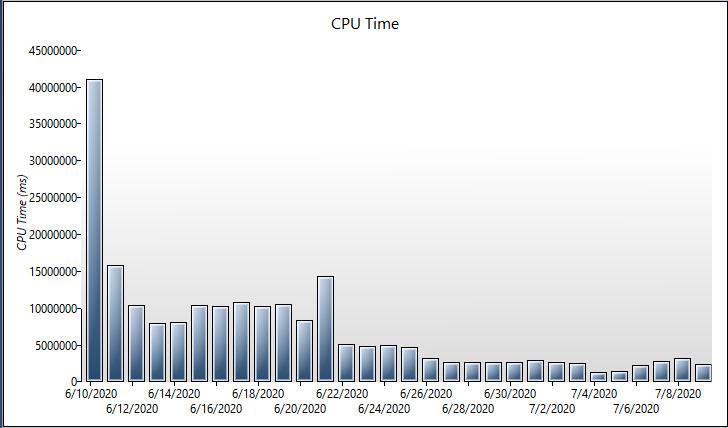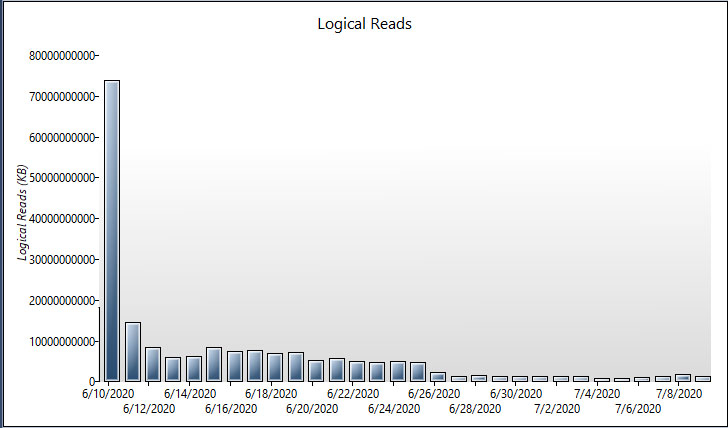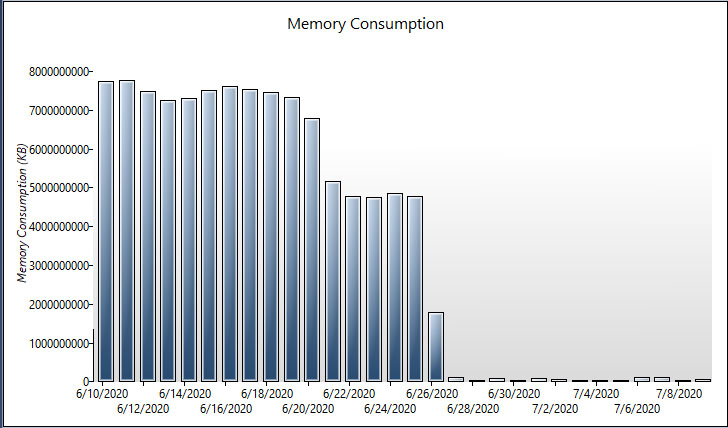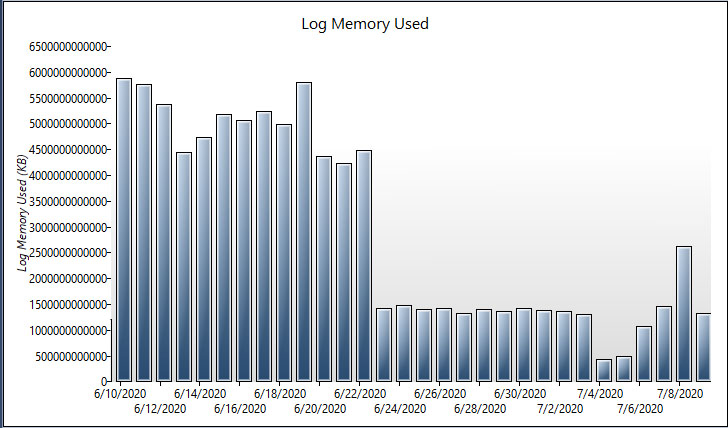60% Reduction in Cost
99% Reduction in Memory Usage
99% Reduction in Logical Reads
90% Reduction in CPU Time
Capitol Energy Systems (CES) is a Sacramento-based technology company specializing in distributed IoT systems. Their product integrates large numbers of smart devices into an online monitor and control system, with alerts and intelligent analytics of both real-time and historical data. Recently CES worked with the Capitol Tech Solutions (CTS) team to evaluate their Azure footprint growth. This work resulted in a sixty percent reduction in cost through Azure tuning and SQL optimization.
With thousands of transactions a minute and hundreds of gigabytes of historical data, CES was rapidly increasing their azure footprint to deal with ever expanding requirements. The initial scope of the project was simply to determine their future growth needs and define a plan for that growth. As the evaluation progressed, this scope was adjusted and eventually expanded to gain immediate cost savings.
The system has several complexities. It supports years of legacy IOT technology. There had already been previous attempts at data optimization. Additionally, there was a separate project to reduce the historical data footprint. These factors lead CES to believe that there was not a large opportunity for performance improvements within scope. But while collecting data across Azure and SQL, Capitol Tech Solutions found that significant performance improvements could be obtained quickly and simply.
CTS worked with CES developers to understand the data and explain potential performance evaluations. After confirming expectations with staff, changes made within two weeks of project start obtained. CTS was able to reduce their current Azure expenses today by 60 percent, and keep future expenses lower by reducing the need to constantly grow Azure instances. The applications SQL performance was vastly improved, allowing CES to add tens of thousands of more IoT devices without increasing infrastructure costs.
Project Start – Growth Evaluation and Knowledge Management

Microsoft Azure contains an abundance of technologies and services available for any business. There are IaaS, PaaS, and FaaS options across the board. These often provide overlapping functionality, varying cost models and security concerns, and different scalability. Microsoft has done extremely well in making development and deployment to these options simple. It does not take an Azure expert to start or grow a product using Azure.
The various services Azure provides generally start off at a low cost per month, and easily scale upward as business needs expand. Capitol Energy Systems had followed a typical lifecycle for a growing company. They had two major PaaS services, an App Service Plan and an Elastic SQL Pool. They supplemented this with various FaaS services to support their products. As their business grew, they simply increased their resource configuration to handle a larger workload. When a pain point occurred, CES developers would evaluate and adjust the code as needed for the issue. New features would be implemented in a similar fashion, with optimizations only occurring if the additional resource cost seemed out of balance to the dev team.
No one on the CES team was an Azure expert. Indeed, expertise is not needed to implement or maintain a basic Azure environment. But as the monthly costs grew CES wanted an evaluation of their Azure framework to determine if it was being used optimally. Their assumption was not that they could reduce their resource needs with this project. They were looking to define their expansion into the next year and beyond; and determine future costs.
Capitol Tech Solutions approached this project by first documenting their current resource use. Like many companies, the institutional knowledge was largely undocumented. While the scope of the project did not encompass developing a full Knowledge Management System (KMS) some simple documentation was needed. Azure cost and resource reports provided the basis quickly and easily. Some short scrums then allowed the details to be filled in. This process immediately found unused services, one with a monthly cost that paid for this project within two years (This was both unusual and not the main driver of cost reductions discussed below, but a nice bonus for CES at the very start of the project).
Once basic knowledge was documented and understood by the CTS reviewer, a deeper evaluation of the service was performed to understand potential growth. The main driver of system resources was assumed to be the heartbeats of thousands of IOT devices. Each device chimes in with its status. The system then evaluates and performing further actions based on that heartbeat.
While a review of the App Service Plan and FaaS support services did support this pattern, the SQL server did not. CTS discovered two main issues when evaluating the SQL: The heartbeat was not as efficient as it could be, and the main resource consumer was not following the pattern of the heartbeat.
While these issues were understood by CES developers, the underlying cause was not. They believed that the issues were simply the products of a large workload and datasets. Another project was in place to reduce the historical data contained in the database. But the SQL database itself was not optimized appropriately to the workload. Our specialist determined that significant performance improvements could be implemented without a large project.
Contact our software team to evaluate and optimize your cloud infrastructure and resources used.
Project Adjustment – Performance Enhancements

Proceeding with estimating system growth without making adjustments was not an optimal situation. The issues would likely grow to the point where they would be addressed. This would then invalidate projected growth that assumed existing workload. CTS’ developer approached the CES team about the situation.
In growing businesses linear, even mildly exponential resource growth can seem normal and expected. With modern servers, system performance is rarely a concern at launch. And an experienced full stack developer can often work through or around performance bottlenecks as they appear. Because existing cost is known and priced into the current product small and growing companies rarely have the desire for reflection. Resources are assumed to be better spent on growth or bugs. There is also often institutional inertia. Employee expertise and experience with the product can become assumptions.
Our specialist had found significant performance improvements that were able to be implemented. Fixing these issues required working with the CES development team with multiple perspectives in mind. The team had to be educated about the process used to find the issues. Their relationship to existing known problems needed to occur to expand the team’s knowledge, as well. And our specialist needed knowledge from the team to refine his suggestions. When working as an outside consultant with a seasoned development team it’s important to be more than simply diplomatic.
Once the changes were accepted and tested implementation was simple. All changes involved the SQL server. They were able to be implemented without a single code update. Performance increases where immediate. After a week cycle to review the performance, the server’s resources were simply turned down a third.
Project Expansion – Knowledge Transfer
With the large performance gains already made, CES expressed a desire for a deeper review. Our specialist believed there was more to be achieved. But the opportunity cost was changing. Further reductions would involve code changes and performance monitoring. It would take more evaluation for likely less performance gains. Ultimately it was decided to expand monitoring and provide some knowledge transfer. This would allow the CES development team to more naturally discover and implement performance improvements themselves.
Proper SQL structure design is vital to a healthy server. Experienced full stack developers understand the basics of SQL, and generally have solid skills at getting data from it. Azure has useful tools to further analyze, and even automatically update the structure of the database. But these tools and experience often lead to individual optimized pieces, not whole system health. Data Adapters, Entity Framework, and other database interaction technologies often cause additional complexities.
Our specialist worked with CES developers to define performance goals for the whole system. Then they developed a plan to identify limitations in SQL monitoring. Once goals and limitations were defined and identified, the development team was able to make decisions on what could be changed and what type of performance increase to expect from the work. This allowed management to define a workload that could be cost/benefit compared to other needs such as new feature requests and bug fixes.
This new understanding of the system allowed CES to obtain a significant additional reduction to cost. Additionally, they were able to do so with advanced knowledge of what would be achieved, before time was committed to implementing the solution. Most importantly, CES is able to continue using the techniques developed into the future.
Conclusion
By engaging with Capitol Tech Solutions’ Azure experts, CES was able to reduce their cost and allow for significant growth without constantly increasing infrastructure costs, allowing CES to scale and grow their SaaS solution.
Software Development Related Articles
The Importance of Quality Data in the Age of Artificial Intelligence
In the era of artificial intelligence (AI), data has become the lifeblood that fuels innovation, drives decision-making, and powers inventive...
A guide to kickstart your next Capitol Tech Solutions Software Development Project
Everything you need to know about preparing a Scope of Work to get your next software development project underwayAt Capitol Tech Solutions, we use...
CTS Team Wins Top Mobile App Development Award
We are proud to announce that Good Firms Directory lists Capitol Tech Solutions as Top Mobile App Development Companies in 2020. Good Firms is a...
Are you looking to grow and scale your SaaS solutions without constantly increasing your infrastructure costs?
Contact CTS today to learn how your business can optimize your Azure spend and grow your user base while reducing costs.







